When endurance athletes hit a plateau, they often look to tweak training intensity, diet, or recovery. But one critical and often overlooked component might be holding them back: respiratory muscle function. The muscles that power our breathing—like the diaphragm and intercostals—are trainable, and targeted respiratory muscle training (RMT) can deliver measurable performance gains, even for already well-trained athletes.
The Respiratory System: More Than Just Oxygen Delivery
During intense aerobic efforts, the respiratory muscles can fatigue just like the legs. As ventilation demand rises with intensity and duration, the work of breathing increases significantly. This can trigger a phenomenon known as the respiratory muscle metaboreflex, where fatigued breathing muscles divert blood flow away from locomotor muscles, accelerating limb fatigue and limiting performance.

RMT directly targets this bottleneck. By strengthening the inspiratory and expiratory muscles, athletes can reduce perceived effort, delay the onset of fatigue, and improve oxygen efficiency during exercise.
What the Research Says
A 2012 systematic review and meta-analysis found that RMT improves endurance performance across sports, including cycling, running, swimming, and rowing. The data showed improvements of up to 18.5% in time trials and constant load tests—particularly in longer-duration efforts. Intriguingly, even though highly trained athletes already have more fatigue-resistant respiratory muscles, they still see gains—just not as large as those in less trained individuals.
Complementing that, a 2021 review focused on PowerBreathe IMT, a threshold-based inspiratory trainer, confirmed that within just 4–6 weeks, athletes experienced a 54% improvement in inspiratory muscle strength, a significant decrease in blood lactate, and enhancements in VO₂max.
Practical Takeaways for Coaches and Athletes
- Assess respiratory capacity: Tools like maximal inspiratory pressure (MIP) and respiratory frequency at threshold can indicate whether the respiratory system is a limiting factor in your athletes.
- Choose the right modality: Both inspiratory muscle strength training and respiratory muscle endurance training (e.g., normocapnic hyperpnea) have shown benefits. However, combined inspiratory and expiratory training may be superior for performance gains.
- Match training to demands: Athletes in sports with high respiratory loads (e.g., swimmers dealing with hydrostatic pressure or runners needing core stability) may benefit most. RMT is especially effective for events lasting longer than 5–10 minutes.
- Incorporate 4–6 week blocks: Significant improvements have been documented in as little as four weeks of consistent RMT, with 2 sessions per day of 30 breaths at ≥15% of MIP.
Bottom Line
For endurance athletes chasing gains, respiratory muscle training is a low-cost, high-impact strategy. It enhances ventilatory efficiency, reduces fatigue, and improves performance—especially in long-duration efforts. Coaches and self-coached athletes who ignore the respiratory system may be leaving performance on the table.
Do you know if your respiratory system is limiting your performance?
Sources
[1] Illi, et al. (2012). Effect of respiratory muscle training on exercise performance in healthy individuals: A systematic review and meta-analysis. Sports Medicine, 42(8), 707–724. https://doi.org/10.2165/11631670-000000000-00000
[2] Fernández-Lázaro, et al. (2021). Inspiratory muscle training program using the PowerBreathe®: Does it have ergogenic potential for respiratory and/or athletic performance? A systematic review with meta-analysis. International Journal of Environmental Research and Public Health, 18(13), 6703. https://doi.org/10.3390/ijerph18136703
[3] Welch, et al. (2019). Respiratory muscles during exercise: Mechanics, energetics, and fatigue. Current Opinion in Physiology, 10, 102–109. https://doi.org/10.1016/j.cophys.2019.04.023
